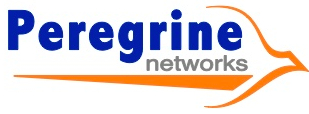Frequently Asked Questions
Q: What about line-of-sight? Don’t you need an unobstructed path from one end to the other?
A: Line of Sight (LoS) or Near Line of Sight (NLoS) is required to use our services. Generally this is not a problem for locations within our service area. Peregrine Networks’s base stations are deployed on the roofs of high-rise buildings and/or nearby high geographical locations, such as mountaintops, to provide ideal access within our service areas. In some cases, trees and other buildings may cause obstructions but those usually can be overcome using a mast extension or installing a smaller tower at the user’s location. Before any service is installed Peregrine Networks will perform a free site survey to ensure that our services can be reliably delivered to your location.
Q: Does weather affect the reliability of a fixed wireless connection?
The frequency ranges that Peregrine Networks uses are in ranges that the attenuation of the radio signal due to rain/snow is insignificant and has no practical impact on the link reliability. Our wireless signals actually provide greater reliability than copper/fiber lines since it is rather common for a physical copper/fiber connection to fail due to high-winds and/or ice/snow storms. Wireless generally isn’t affected by such events.
Q: What about security? Can my wireless data be intercepted? Isn’t Wireless insecure?
A: Peregrine Networks’s wireless network is a carrier class wireless network designed to provide robust and reliable last miles services to users while implementing a set of security and encryption schemes to protect user data.
Every customer is individually provisioned on a point-to-point wireless circuit that is only capable of communications between the customer’s radio and Peregrine Networks base station. Each customer radio has to authorize with the base station before it’s capable of receiving or transmitting information. This authorization mechanism eliminates any rogue devices from being able to receive our signals.
Additionally Peregrine Networks’s wireless back-haul links employ a wide range of Advanced Encryption Standards (AES) that have been designed to meet the National Institute of Standards and Technology (NIST) – Computer Security Division FIPS-197 Standards (NIST FIPS-197). Further information on this standard can be at csrc.nist.gov/publications/PubsFIPS.html
To further enhance security, Peregrine Networks Wireless employs directional antennas throughout its network to ensure that wireless signals are only received at the locations where they are intended for further mitigating any remote chance of interception.
Because of these advanced security features, Peregrine Networks wireless network is actually more secure than a standard T1, DSL, or cable connection. What many people fail to realize is that copper lines strung up on telephone poles still radiate energy, which can easily be intercepted. Plus T1/DS3, DSL, and cable services don’t provide signal encryption unlike Peregrine Networks’s wireless signals that implement a highly effective encryption scheme.
Still, it’s important to recognize that Internet access over any technology (T1, DSL, Cable, and fixed wireless) has potential security implications so Peregrine Networks always recommends the use of security technologies such as encryption based VPN’s and Firewalls when connecting to the Internet.
Q: What do you do to get access to the roof if the end-user doesn’t own the building? How big is the antenna that is installed?
A: Peregrine Networks Wireless’ customer-premise equipment can be installed on almost any location. We install the service in areas that rarely are noticed by people generally using an antenna that is 12×12 inches in size. Peregrine Networks will work with the building management to procure a spot for our services and installations if the space is being leased.
Peregrine Networks Wireless’ equipment qualifies under FCC rule 47 C.F.R. Section 1.4000, as amended, which prohibits restrictions that impair a person’s ability to install, maintain, or use a fixed-wireless service antenna. The rule applies to state or local laws or regulations, including zoning, land-use or building regulations, private covenants, homeowners’ association rules, condominium or cooperative association restrictions, lease restrictions, or similar restrictions on property where the user has ownership or a leasehold interest in the property. Additional information can be found on the Federal Communications Commission web site at www.fcc.gov/mb/facts/otard.html.
